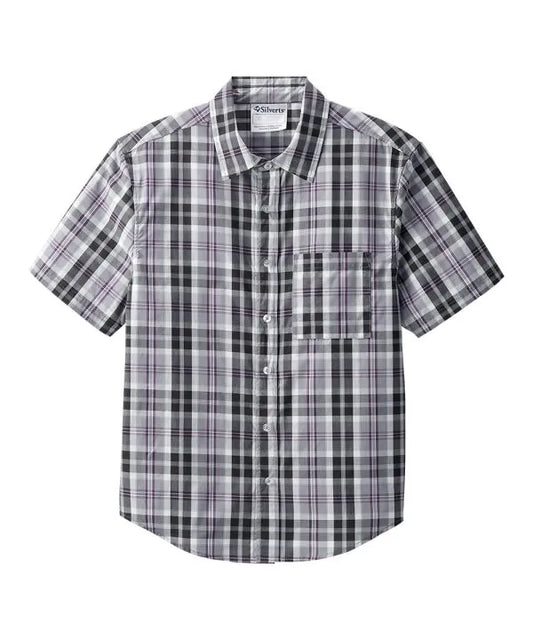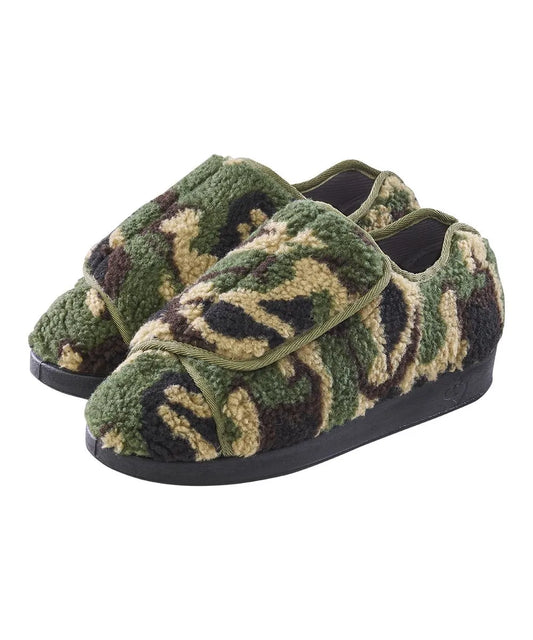Written by: Tara Chen
Even seemingly small details, such as the way your socks seam or how snug your shoes feel after a long day, can have a significant impact on your comfort and well-being when you have diabetes. These days, footwear is more than just fashion or utility. It's about safety, convenience, and peace of mind for people with diabetes.
The designs of diabetic-friendly shoes have advanced significantly from large, clinical-looking styles. Modern adaptive footwear combines comfort, style, and support. They are the perfect choice for those who require options that are long-lasting, easy to put on, and considerate of sensitive feet. It's time to examine what your feet really need, regardless of how long you've been managing diabetes.
What Makes Shoes Diabetic-Friendly?
All diabetic-friendly shoes must be comfortable, but not all comfortable shoes are diabetic-friendly. The main distinction is how carefully the shoe is made to address the particular foot health issues that diabetes can cause.
Peripheral neuropathy, or diminished foot sensation, and poor circulation are common in those with diabetes. This implies that a minor blister or tight fit could swiftly develop into a more significant problem. In order to lower the risk of ulcers or long-term damage, diabetic-friendly shoes are made to reduce friction, relieve pressure points, and provide proper alignment.
These are the features to look out for in diabetic-friendly shoes:
-
Seamless Interiors: People with diabetes may have sensitive skin that can become irritated when rubbed on the internal stitching of shoes. To reduce this friction, try to choose diabetic-friendly shoes that have smooth interiors.
-
Wide Toe Boxes: A shoe with a spacious toe area helps relieve pressure on bunions or joints. This also helps avoid crowding. For example, June Adaptive offers Women’s Extra Wide Comfort Shoes from the brand Silverts.

-
Non-Binding Uppers: Soft, flexible materials allow for swelling and prevent pinching.
-
Extra Depth: Custom orthotics or insoles can be fitted into many diabetic-friendly shoes. This provides greater control over foot support.
-
Shock-Absorbing Soles: Walking becomes more comfortable due to less strain and impact.
-
Adjustability: Stretch panels or hook-and-loop fasteners enable customized adjustments to the fit of the shoe throughout the entire day.
These features for a diabetic-friendly shoe are necessary and have a direct impact on long-term mobility and independence for people with diabetes.
Best Slip-On and Hands-Free Shoe Options
It's not always easy to bend over and tie laces. Additionally, tinkering with tight straps or laces can feel like a mini workout if you have diabetic neuropathy, arthritis, or limited mobility. Because of this, hands-free and slip-on shoes have revolutionized the adaptive footwear market.
In addition to being convenient, contemporary slip-on diabetic shoes offer protection and structure. Here are some excellent options that combine style and functionality:
-
Stretchable Knit Slip-Ons
These shoes have a flexible, form-fitting design that conforms to the natural curves of your foot and a breathable knit upper. This type of adaptive flexibility can be crucial for people with diabetes, particularly those who suffer from bunions, hammertoes, or mild swelling. The knit fabric allows the foot to breathe and move freely instead of restricting it, which lowers the possibility of pressure points or irritation.
In order to absorb shock and offer all-day support, many designs also incorporate multi-layer cushioned insoles and reinforced soles. The knit fabric frequently has moisture-wicking qualities that help keep your feet cool and dry, which is crucial if you're prone to infections or perspiration.
-
Hands-Free Step-In Shoes
Hands-free step-in shoes are an amazing advancement in adaptive footwear, particularly for people with back or hand arthritis, neuropathy, or mobility issues. As you step in, the back heel of the shoe compresses, then securely springs back around your foot.
The consistent fit and absence of pressure seams make this style particularly diabetic-friendly. To aid in stability and shock absorption, these shoes are frequently constructed with supportive midsoles and cushioned linings. They offer convenience and safety to those who depend on public transportation or walk a lot.
-
Orthopedic Hook-and-Loop Slip-Ons
With good reason, these are a timeless favourite in the world of adaptive footwear. You can slide your foot in without bending over or putting strain on your aching joints thanks to the wide openings at the top and across the vamp of orthopedic hook-and-loop shoes. If your feet swell during the day, the wide adjustable straps allow you to customize the fit once your foot is in place.
The emphasis on orthopedic support is what distinguishes these shoes. Many have detachable insoles, making room for custom orthotics that can stabilize your arch, relieve pressure on the ball of your foot, and address gait problems. Additionally, the collar and heel have additional padding to reduce friction.
-
Backless Diabetic Clogs
Although they may have a straightforward design, backless clogs are incredibly helpful for swift transitions, particularly if you have diabetes and require dependable footwear for late-night wake-ups, short walks, or kitchen preparation. They are especially helpful for people with restricted mobility, balance issues, or morning stiffness in the feet and ankles because they are effortless to put on and take off.
Seek out options specifically designed for people with diabetes, which often feature long-lasting grip soles to prevent slipping and memory foam or gel-padded insoles for luxurious comfort. In order to lower the risk of infection and odour, many also have antimicrobial linings. They provide support without being constrained, making them ideal for indoor wear or quick errands, but not usually appropriate for lengthy outdoor walks.
How to Prevent Foot Irritation with Adaptive Footwear
Although foot irritation may seem insignificant, it can quickly worsen for people with diabetes. Blisters from a poorly fitting shoe or one that rubs in the wrong place can develop into open sores, particularly if circulation is compromised. These are some tips to prevent foot irritation during the day.
-
Check the Fit of the Shoe Daily
In a single day, feet can change a lot. Many people with diabetes experience swelling, especially after standing or walking for long periods of time. Because your feet are probably at their largest in the afternoon or evening, it is best to try on new shoes during these times. By dinner, a shoe that fits comfortably in the morning may feel constricting and tight.
Make sure the sides of your feet aren't being compressed and that there is adequate room in the toe box. There should be roughly a thumb's width in front of your longest toe. Feel around the heel with your toes and make sure it fits snugly without rubbing or pinching. Better protection, comfort, and circulation tomorrow are all correlated with a good fit.
-
Rotate your Footwear
Although it might seem like the simplest solution, wearing the same shoes every day can eventually lead to foot fatigue and irritation. This is because the same parts of your feet are repeatedly compressed by even the best-fitting shoes. Additionally, the risk of calluses, blisters, or even ulcers rises when this is coupled with skin sensitivity brought on by diabetes.
Rotating your shoes allows the pressure points to heal. Additionally, it lets each pair of shoes air out and completely dry between wears, which is crucial for managing moisture and odour. Try switching up your shoe game by wearing a hands-free step-in one day and a stretchable knit sneaker the next. Supportive slippers or indoor clogs can also provide comfort and stability while allowing your feet to rest.
-
Use Moisture-Wicking Linings
For people with diabetes, moisture-wicking linings are not merely a luxury; they are a necessity. Throughout the day, feet naturally perspire, particularly in warm weather or when wearing enclosed footwear. Trapped moisture provides a haven for bacteria and fungi, which can quickly cause infections or bad foot odour. Avoiding damp, sweaty conditions is crucial because skin is frequently more delicate.
Seek linings composed of technical textiles such as bamboo fibres, or mesh treated with antimicrobials. Moisture is drawn by these materials from the foot to the shoe's outer layer, where it can evaporate. This lowers the chance of blisters, keeps your skin dry, and improves the shoe's overall breathability.
Are Compression Socks Compatible with These Shoes?
For people with diabetes who have trouble with swelling or circulation, compression socks can be of great assistance. They lessen edema, promote blood flow, and keep many people from feeling achy and heavy in their legs at the end of the day. However, when it comes to matching these tighter-fitting socks with diabetic-friendly shoes, not all of them are made equal.
Here's how to ensure that your compression socks and shoes complement one another rather than work against it:
-
Select Adjustable Closures
Depending on how your legs and feet feel throughout the day, you can adjust the fit of shoes with hook-and-loop straps or elastic laces. For instance, the Women’s Extra Wide Mary Jane Shoes from June Adaptive are both stylish and practical. It features a Velcro closure for an adjustable fit, a cushioned rubber sole, and stretch fabric.

-
Make Cushioned Insoles a Priority
Hard soles may feel less forgiving due to the additional pressure from compression socks. To lessen impact and foot fatigue, look for shoes with a cushioned sole. For example, the Women’s Wide Easy Slip On Sneakers Without Laces from June Adaptive is made with lightweight cushioned rubber soles that make you feel like you are walking on clouds.

-
Test Fit While Wearing Socks
Never try on shoes without compression socks on. This guarantees that tight spots are avoided and that the fit considers the additional compression layer.
Top Brand for Diabetic-Adaptive Shoes
Finding diabetic-friendly shoes doesn't have to be a daunting task. June Adaptive offers stylish adaptive footwear that is specifically made for accessibility without compromising style. For those with diabetes and mobility issues, many of their adjustable and slip-on styles are ideal.
Final Thoughts
Having diabetes makes you more aware of your body, and your feet should be treated with the same consideration as your blood sugar or diet. Selecting adaptive footwear isn't about compromising on style or quality. It's about equipping yourself with resources that promote your comfort, independence, and well-being. Your shoes should support you, not get in the way, whether you're starting a new routine, going to your next appointment, or just going about your daily business.
To discover more adaptive fashion ideas and accessible solutions, sign up for the June Adaptive newsletter. You’ll get firsthand updates on the newest products and diabetes-friendly footwear.















